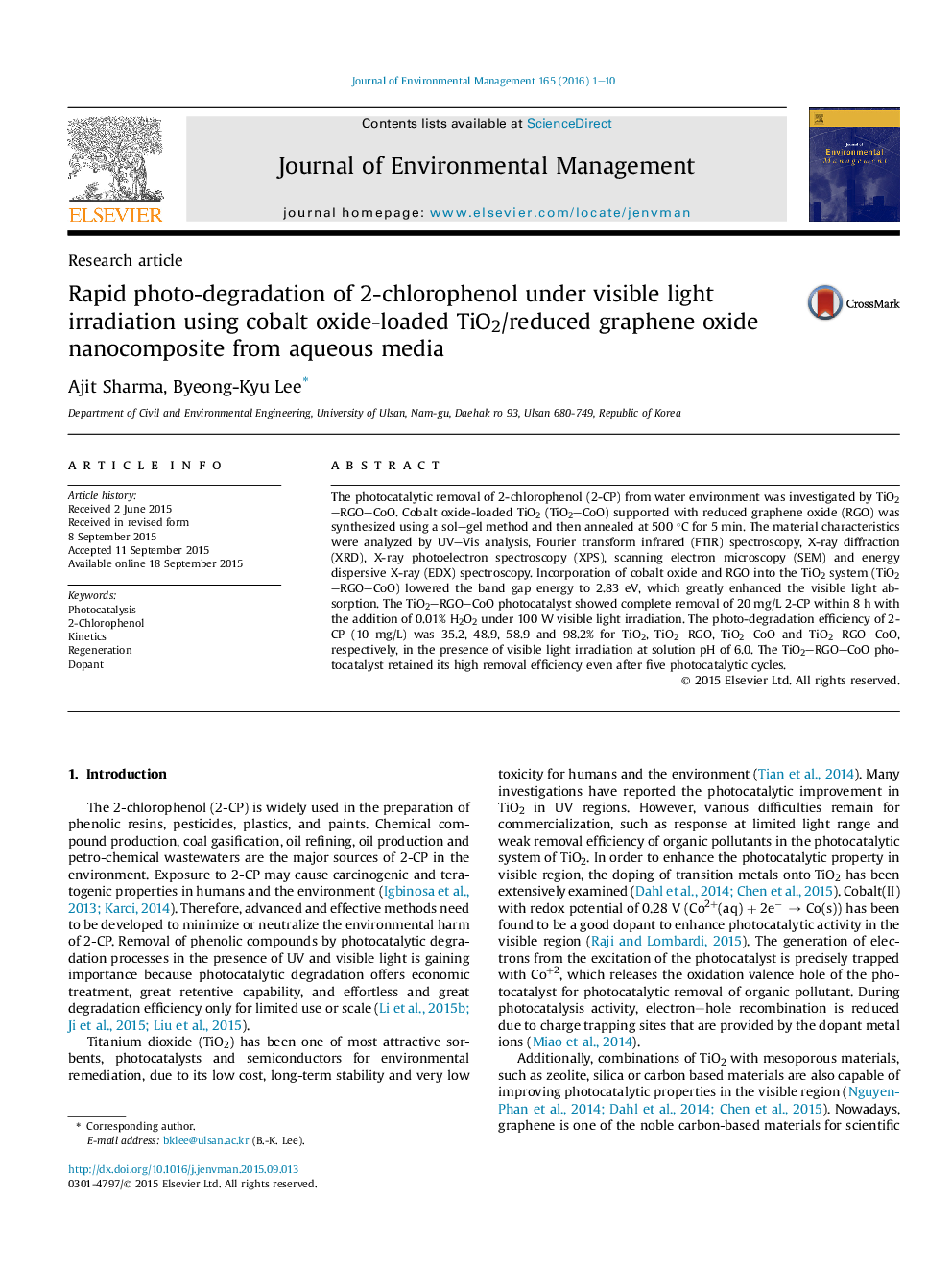| Article ID | Journal | Published Year | Pages | File Type |
|---|---|---|---|---|
| 1055468 | Journal of Environmental Management | 2016 | 10 Pages |
•CoO-loaded TiO2 supported with RGO was synthesized by an in-situ sol–gel process.•TiO2–RGO–CoO greatly absorbed visible light with band gap energy of 2.83 eV.•The nanocomposite exhibited superior degradation capacity compared to that of TiO2.•Mild, but not excessive, H2O2 addition increased the degradation power.•TiO2–RGO–CoO retained its high degradation even after five regeneration cycles.
The photocatalytic removal of 2-chlorophenol (2-CP) from water environment was investigated by TiO2–RGO–CoO. Cobalt oxide-loaded TiO2 (TiO2–CoO) supported with reduced graphene oxide (RGO) was synthesized using a sol–gel method and then annealed at 500 °C for 5 min. The material characteristics were analyzed by UV–Vis analysis, Fourier transform infrared (FTIR) spectroscopy, X-ray diffraction (XRD), X-ray photoelectron spectroscopy (XPS), scanning electron microscopy (SEM) and energy dispersive X-ray (EDX) spectroscopy. Incorporation of cobalt oxide and RGO into the TiO2 system (TiO2–RGO–CoO) lowered the band gap energy to 2.83 eV, which greatly enhanced the visible light absorption. The TiO2–RGO–CoO photocatalyst showed complete removal of 20 mg/L 2-CP within 8 h with the addition of 0.01% H2O2 under 100 W visible light irradiation. The photo-degradation efficiency of 2-CP (10 mg/L) was 35.2, 48.9, 58.9 and 98.2% for TiO2, TiO2–RGO, TiO2–CoO and TiO2–RGO–CoO, respectively, in the presence of visible light irradiation at solution pH of 6.0. The TiO2–RGO–CoO photocatalyst retained its high removal efficiency even after five photocatalytic cycles.
Graphical abstractFigure optionsDownload full-size imageDownload as PowerPoint slide
